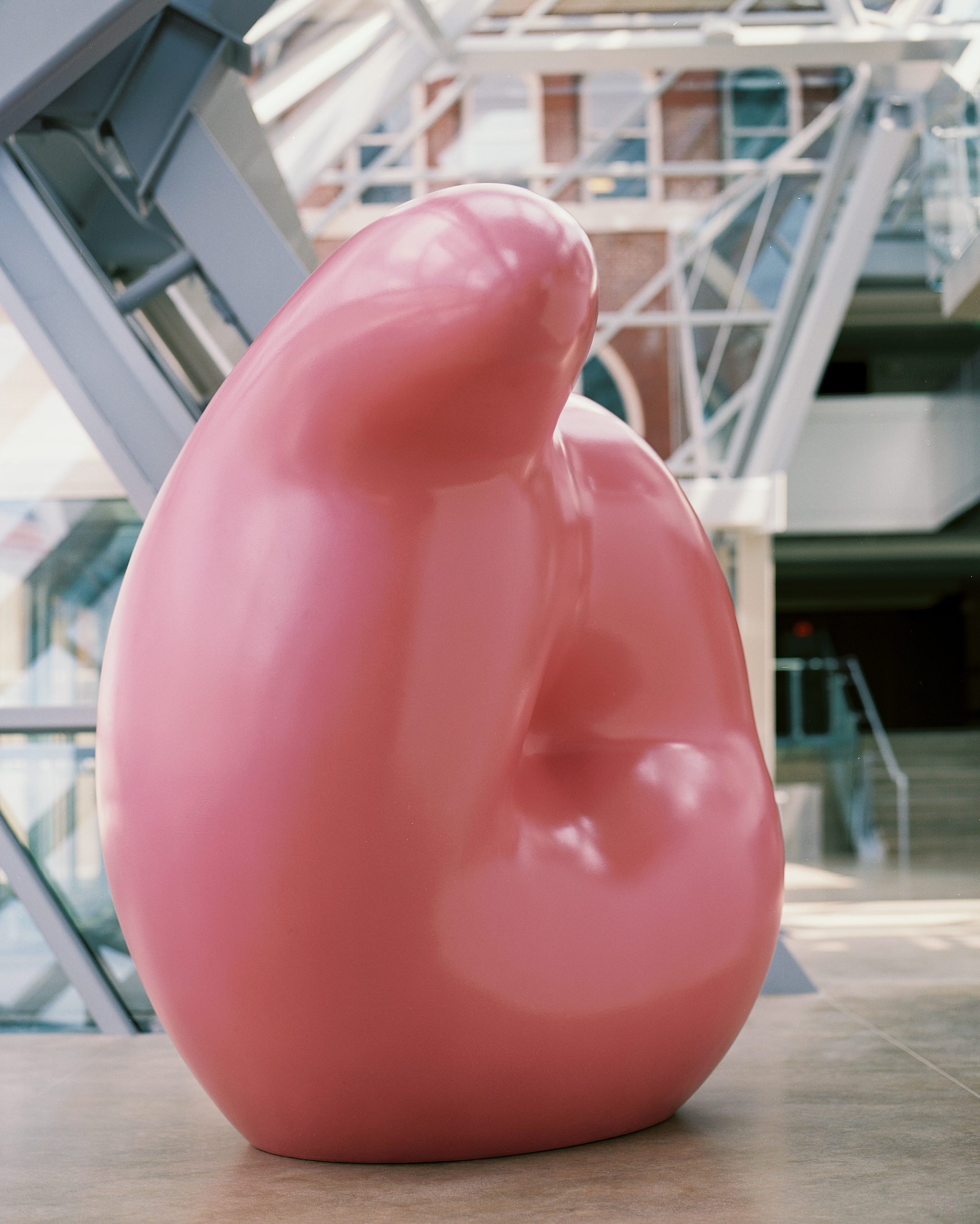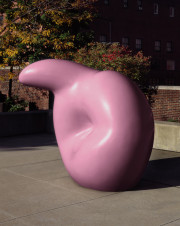Claes Oldenburg
(Stockholm, Sweden, 1929 - 2022, New York, New York)
Inverted Q
1976
Painted cast concrete
72 x 70 x 63 in. (182.9 x 177.8 x 160.0 cm)
Collection of the Akron Art Museum
Gift of Mary S. and Louis S. Myers
1977.20
© Claes Oldenburg
More Information
'Inverted Q' was created because in 1972 Mary and Louis Myers invited Oldenburg to propose a sculpture for a park adjoining the downtown library. A letter seemed appropriate for a library, while the Q’s tirelike shape paid homage to the then-dominant rubber industry. Oldenburg, a fan of the giant balloons in the Macy’s Thanksgiving Day Parade, hoped to cast the sculpture in rubber. Two years of collaboration with researchers and technicians at the rubber companies revealed that current technology did not permit the casting of such a massive form in rubber. In 1976, Oldenburg had Inverted Q cast in concrete in an edition of four. By this time, the library had acquired another sculpture for its garden. The Myers purchased the first work in the edition and generously donated it to the museum.




